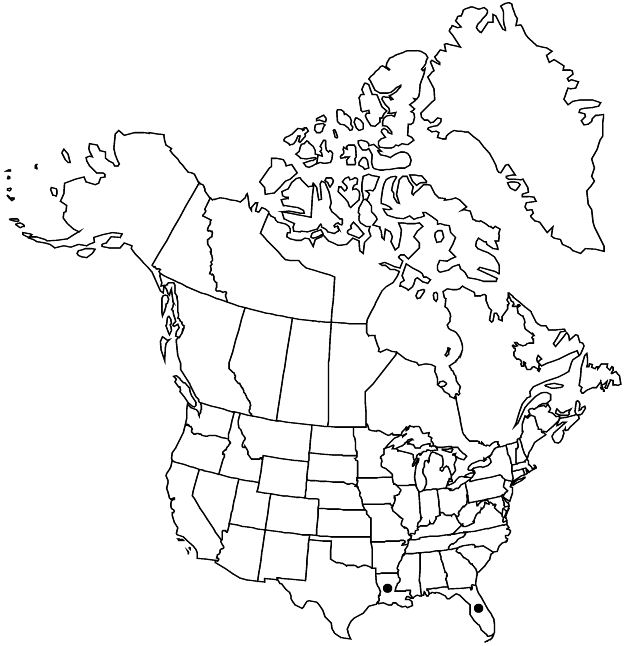Difference between revisions of "Euphorbia thymifolia"
Sp. Pl. 1: 454. 1753.
FNA>Volume Importer |
imported>Volume Importer |
||
| (6 intermediate revisions by 2 users not shown) | |||
| Line 12: | Line 12: | ||
|name=Chamaesyce thymifolia | |name=Chamaesyce thymifolia | ||
|authority=(Linnaeus) Millspaugh | |authority=(Linnaeus) Millspaugh | ||
| + | |rank=species | ||
}} | }} | ||
|hierarchy=Euphorbiaceae;Euphorbia;Euphorbia sect. Anisophyllum;Euphorbia thymifolia | |hierarchy=Euphorbiaceae;Euphorbia;Euphorbia sect. Anisophyllum;Euphorbia thymifolia | ||
| Line 27: | Line 28: | ||
|elevation=0–20 m. | |elevation=0–20 m. | ||
|distribution=Fla.;La.;Mexico;West Indies;South America;introduced in Asia;tropical Africa;Australia. | |distribution=Fla.;La.;Mexico;West Indies;South America;introduced in Asia;tropical Africa;Australia. | ||
| − | |discussion=<p>Euphorbia thymifolia is a widespread tropical and subtropical weed. It is not certain where the species is native, but most likely it originated in the New World and then became widespread in the rest of the tropics. Euphorbia thymifolia is present in the flora area in southern Florida and coastal Louisiana, where it is likely adventive. Euphorbia thymifolia is generally similar to E. maculata but is characterized by its short pistillate pedicels and non-exserted capsules that remain largely enclosed by the involucre and by its unequal involucral gland appendages.</p> | + | |discussion=<p><i>Euphorbia thymifolia</i> is a widespread tropical and subtropical weed. It is not certain where the species is native, but most likely it originated in the New World and then became widespread in the rest of the tropics. <i>Euphorbia thymifolia</i> is present in the flora area in southern Florida and coastal Louisiana, where it is likely adventive. <i>Euphorbia thymifolia</i> is generally similar to <i>E. maculata</i> but is characterized by its short pistillate pedicels and non-exserted capsules that remain largely enclosed by the involucre and by its unequal involucral gland appendages.</p> |
|tables= | |tables= | ||
|references= | |references= | ||
| Line 36: | Line 37: | ||
-->{{#Taxon: | -->{{#Taxon: | ||
name=Euphorbia thymifolia | name=Euphorbia thymifolia | ||
| − | |||
|authority=Linnaeus | |authority=Linnaeus | ||
|rank=species | |rank=species | ||
| Line 51: | Line 51: | ||
|publication year=1753 | |publication year=1753 | ||
|special status= | |special status= | ||
| − | |source xml=https:// | + | |source xml=https://bitbucket.org/aafc-mbb/fna-data-curation/src/2e0870ddd59836b60bcf96646a41e87ea5a5943a/coarse_grained_fna_xml/V12/V12_217.xml |
|genus=Euphorbia | |genus=Euphorbia | ||
|section=Euphorbia sect. Anisophyllum | |section=Euphorbia sect. Anisophyllum | ||
Latest revision as of 19:14, 5 November 2020
Herbs, annual or perennial, with taproot. Stems prostrate, mat-forming, 15–30 cm, strigose to strigose-tomentulose. Leaves opposite; stipules distinct or slightly connate at base, linear-subulate, entire or slightly parted, 0.9–1.2 mm, strigose-tomentulose; petiole 0.5–1 mm, sparsely strigose-tomentulose; blade broadly elliptic to narrowly oblong or ovate-lanceolate, 3–10 × 1.8–5 mm, base asymmetric, one side usually angled or rounded and the other truncate and expanded into small, rounded auricle, margins serrate (larger leaves) to serrulate (smaller leaves), apex blunt to acute, abaxial surface sparsely tomentulose to glabrate, adaxial surface glabrate; palmately veined at base, pinnate distally. Cyathia usually in small, cymose clusters on congested, axillary branches; peduncle (0–)0.1–0.3 mm. Involucre broadly obconic, becoming distended and distorted by base of partially included capsule, 0.4–0.8 × 0.3–0.5 mm, strigose; glands 4, red, slightly concave, ± unequal, subcircular to broadly oval, 0.1–0.2 × 0.2–0.3 mm; appendages white to pink, usually unequal, occasionally ± equal at distal nodes, elongated toward sinus, sometimes rudimentary, 0.1–0.4 × 0.1–0.3 mm, distal margin entire or crenulate. Staminate flowers 3–5. Pistillate flowers: ovary densely strigose; styles 0.4–0.5 mm, 2-fid 1/2 length. Capsules conic to truncate-ovoid, scarcely exserted from involucre, base often remaining inside involucre and splitting one side of it during maturation, 0.9–1.2 × 1–1.2 mm, sparsely to moderately strigose; columella 0.6–1 mm. Seeds white, tan underneath coat, ovoid to narrowly ovoid, sharply 4-angled in cross section, 0.8–0.9 × 0.4–0.6 mm, with 4 low transverse ridges often slightly extending into angles, not sulcate.
Phenology: Flowering and fruiting midsummer–early fall.
Habitat: Disturbed areas, often near salt water.
Elevation: 0–20 m.
Distribution

Fla., La., Mexico, West Indies, South America, introduced in Asia, tropical Africa, Australia.
Discussion
Euphorbia thymifolia is a widespread tropical and subtropical weed. It is not certain where the species is native, but most likely it originated in the New World and then became widespread in the rest of the tropics. Euphorbia thymifolia is present in the flora area in southern Florida and coastal Louisiana, where it is likely adventive. Euphorbia thymifolia is generally similar to E. maculata but is characterized by its short pistillate pedicels and non-exserted capsules that remain largely enclosed by the involucre and by its unequal involucral gland appendages.
Selected References
None.